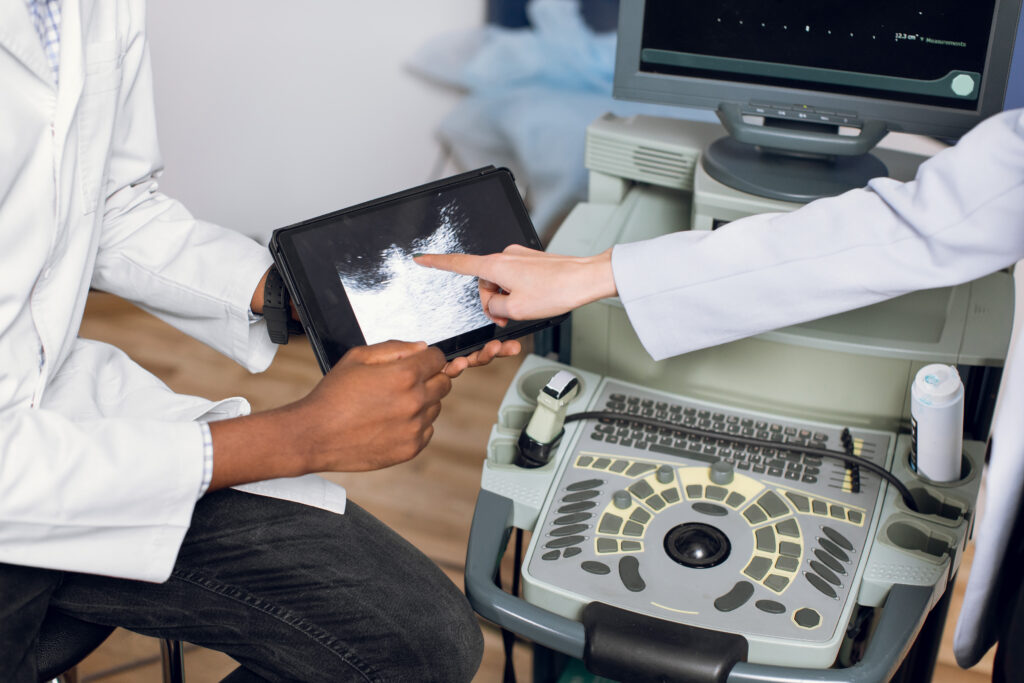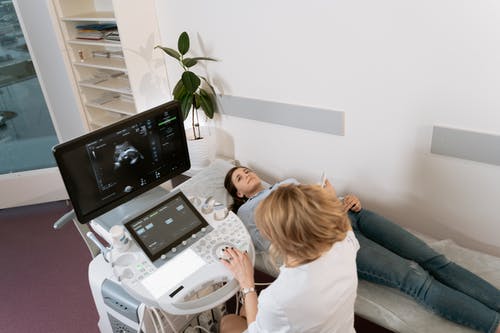Ultrasound Education
In the dynamic field of ultrasound education, practical experience is paramount to mastering the intricacies of image acquisition, interpretation, and diagnostic decision-making. Hands-on training, facilitated by simulators and practical sessions, offers invaluable opportunities for learners to refine their skills in a controlled and interactive environment.
In this blog post, we explore the significance of simulator and hands-on trainings in ultrasound education and their pivotal role in shaping competent and confident practitioners.

Interactive Learning with Simulators:
-
- Ultrasound simulators replicate real-life scenarios and patient encounters, providing learners with a safe and controlled environment to practice scanning techniques and procedures
-
- Interactive features, such as realistic anatomical models, simulated patient responses, and adjustable imaging parameters, enable learners to engage in hands-on practice and receive immediate feedback on their performance.
Reinforcing Technical Proficiency:
-
- Simulator-based training allows learners to reinforce technical proficiency in ultrasound scanning, including probe manipulation, transducer positioning, and optimizing image quality.
-
- By repeating simulated scenarios and troubleshooting technical challenges, learners develop muscle memory and confidence in their ability to perform ultrasound examinations effectively.
Navigating Clinical Challenges:
-
- Simulators provide a platform for learners to navigate clinical challenges and encounter rare or complex cases in a risk-free environment.
-
- From identifying anatomical variants to recognizing pathological findings, simulator-based scenarios prepare learners to handle diverse clinical scenarios with competence and composure
Customized Learning experiences:
-
- Simulator-based training offers flexibility to customize learning experiences based on learners’ skill levels, interests, and learning objectives.
-
- Learners can progress through simulated cases at their own pace, focusing on areas of weakness or exploring advanced topics relevant to their clinical practice.
Integration of Multidisciplinary Skills:
-
- Hands-on trainings with simulators facilitate the integration of multidisciplinary skills, such as communication, teamwork, and clinical decision-making.
-
- Collaborative scenarios involving sonographers, radiologists, physicians, and other healthcare professionals foster interdisciplinary collaboration and prepare learners for collaborative practice in clinical settings.
Enhancing Patient Safety and Care:
-
- Simulator-based training contributes to enhanced patient safety and care by allowing practitioners to refine skills and protocols before applying them to real patients.
-
- Practicing on simulators reduces the risk of errors and complications during clinical procedures, ultimately improving the quality and safety of patient care.
Continual Skill Development:
-
- Hands-on training with simulators supports continual skill development and lifelong learning among ultrasound practitioners.
-
- Even experienced practitioners can benefit from simulator-based refresher courses and advanced training modules to stay current with evolving technologies and best practices in ultrasound imaging.
Simulator and hands-on training play a vital role in ultrasound education, offering learners a dynamic and immersive learning experience that reinforces technical proficiency, navigates clinical challenges, and enhances patient care.
By integrating simulated scenarios into educational curricula and providing learners with opportunities for interactive learning and skill development, ultrasound educators can empower the next generation of practitioners to excel in the dynamic field of diagnostic imaging.


